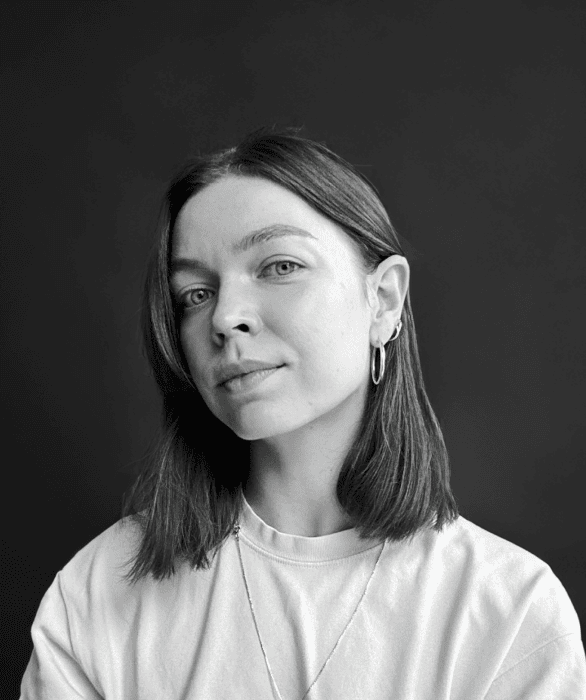Outline:
According to a survey by Forbes, businesses that focus on local branding see up to a 15% increase in revenue within the first year alone. This statistic underscores the significant impact local branding has on driving consumer preference and business growth. For small to medium-sized businesses, the application of targeted local branding strategies can transform their market presence and customer base.
As a local branding company, we will walk you through the essentials of establishing a strong local brand in this article. From defining local branding to exploring its benefits and implementing strategic actions, this guide provides comprehensive local branding insights and tools necessary to build a brand that resonates deeply within your community, fosters customer loyalty, and drives meaningful growth.
What Is Local Branding
Local branding is about crafting a brand’s identity that not only fits but flourishes within a specific geographic locale. This strategy goes beyond mere geographical targeting; it’s about embedding your brand into the fabric of the community, creating an identity that resonates as a familiar and trusted presence.
How Local Branding Works
Think of local branding as customizing your brand’s voice and offerings to sync with the heartbeat of your area. It’s about adjusting your brand to speak the local language, celebrate what they celebrate, and respond to the unique needs and preferences of the local audience. This could mean tailoring your product line to include local flavors, adapting your marketing materials to reflect local dialects, or designing promotions around local events.
For smaller businesses, the value of a local branding agency can’t be overstated. It’s your secret weapon against the big box stores and global giants. By weaving your brand into the local scene, you not only increase your visibility but also become the go-to choice for residents.
Local branding isn’t just about being seen—it’s about becoming part of the community’s daily conversation. It builds a level of trust and loyalty that is hard to achieve with broad-stroke strategies, turning first-time visitors into regulars and regulars into advocates. This community-focused local branding approach not only drives foot traffic but also creates a strong foundation of repeat customers and word-of-mouth referrals, which are essential for long-term success.
Local vs. Global Branding
When it comes to branding, one size does not fit all. The branding strategy you choose can greatly impact how well your brand connects with potential customers. This is where understanding the differences between local branding and global branding becomes crucial.
Comparison
Local branding is like being a hometown hero; it’s all about cultivating a close-knit relationship with the community around you. It means your brand uses local knowledge to meet specific needs and preferences, often resulting in more personalized and relevant experiences for your customers.
On the other hand, global branding strives to maintain a consistent brand image and message across all markets. This broad approach aims to appeal to a diverse audience, transcending local peculiarities to highlight universal values and benefits.
Synergy
While they may seem at odds, local and global branding can complement each other beautifully. A business can leverage its global brand’s strength and recognition to gain trust quickly while using local branding company tactics to fine-tune the experience for each market. This synergy allows for a nuanced approach that maximizes reach and resonance: the global brand draws them in, and the local flavor keeps them coming back.
This blend of global appeal with locally branded charm can be the key to standing out in a saturated market. It combines the best of both worlds—broad visibility and deep connection—creating a versatile branding strategy that adjusts according to the audience’s cultural and regional tastes.
Benefits of Local Branding: Its Importance for Small Businesses
Why should small businesses invest their energies into local branding? It’s not just about budget-friendliness—it’s about making a tangible impact right where it matters most. Let’s explore the multifaceted benefits that local branding company like Ester can offer to small businesses.
Local Branding Cost-Effectiveness
Local branding allows for a more concentrated use of marketing resources. By focusing efforts on a specific geographic area, small businesses can optimize their spending on campaigns that are tailored to the local demographic, reducing waste and enhancing the effectiveness of each marketing dollar.
Enhanced Community Engagement
Integrating your business into the fabric of the local community can transform how customers perceive your brand. When you participate in local events, support local causes, or celebrate locally branded traditions, you’re not just another business—you’re a community partner. This deep engagement builds a loyal customer base that values your presence and contribution to their community.
Accelerated Brand Recognition
Frequent exposure in a localized area helps your brand quickly become a household name among local residents. This familiarity breeds comfort and trust, leading to increased customer retention and easier acquisition of new customers through recognition alone.
Boosted Local SEO
A focused local branding strategy enhances your visibility in local search results. When customers search for businesses like yours in their locality, a well-optimized local branding effort ensures your business stands out. This can lead to more in-store visits, online bookings, and direct inquiries.
Word-of-Mouth Local Branding Amplification
Happy customers talk. By impressing your local clientele, you catalyze the spread of word-of-mouth recommendations. In tight-knit communities, this form of endorsement is invaluable and can significantly extend the reach and reputation of your brand.
Increased Market Responsiveness
Local branding keeps your finger on the pulse of your community’s needs and preferences. This closeness allows you to respond quickly to market changes, customer feedback, and local trends, keeping your offerings relevant and your business agile.
Strategies for Building a Local Brand: A Comprehensive Guide
Building a local brand is both an art and a science. It requires a thoughtful blend of strategy, creativity, and community insight. Below, there is a step-by-step guide on how to develop a compelling local brand that connects deeply with your community and stands out in the local market.
01 Define Your Unique Selling Proposition
Identification: The first step in differentiating your business in a crowded market is identifying what makes you uniquely appealing to your local audience. This might be an innovative product, exceptional service, a commitment to sustainability, or deep local roots. Assess what you offer that your competitors don’t, and consider what aspects of your business most resonate with local tastes and values.
Articulation: Once your USP is defined, the challenge lies in articulating it clearly and compellingly across all your marketing and communications. This articulation should make the locally branded relevance of your offering unmistakable, linking your unique attributes directly to the needs or desires of the local community. For instance, if your USP is a locally sourced menu, emphasize how this supports local farmers and promotes sustainability within the community.
02 Develop Brand Personality and Values
Personality Creation: Your brand’s personality should reflect the personality traits of your local area. Is your community artistic, rugged, traditional, or eclectic? Your brand’s personality should feel like a natural fit, whether it’s through the tone of your communications, the style of your interiors, or the vibe of your events.
Value Alignment: Aligning your brand with the values of your community not only strengthens ties but also builds trust. For example, if your community values environmental responsibility, demonstrate your brand’s commitment to these values through initiatives like reducing waste, using sustainable materials, or supporting local environmental causes.
Messaging Consistency: Consistency in your messaging solidifies your brand’s identity and ensures that your community perceives you the way you intend. Ensure that every piece of content, advertisement, and customer interaction reinforces the personality and values you aim to embody.
03 Understand Your Audience
Audience Research: Invest time in understanding who your customers are, what they value, and how they like to communicate. This might involve analyzing local demographics, social media trends, and even local news to get a sense of the community’s interests and concerns.
Tailored Messaging: With a deep understanding of your audience, tailor your marketing messages to speak directly to their preferences and lifestyle. This can include using local language nuances, referencing local landmarks or traditions in your marketing, and addressing local issues or needs.
04 Enhance Customer Experience
Local Identity: Ensure that every customer touchpoint reflects your local brand identity. This could mean incorporating locally branded art into your store design, playing local music, or even offering customer service in the local dialect.
Service Excellence: Providing outstanding customer service tailored to local expectations is crucial. Train your team to understand local customs and preferences to provide personalized service that makes customers feel valued and understood.
05 Marketing Local Brands
Channel Selection: Determine which marketing channels are most effective in your locality. This could include a popular local radio station, a widely-read community magazine, or influential social media groups specific to your area.
Integrated Approach: Integrate your online and offline marketing efforts to create a solid and far-reaching brand awareness. For instance, promote an in-store event on your social media platforms, or use traditional advertising to drive traffic to your website or social media pages.
06 Engage in Local Initiatives
Community Engagement: Actively participating in community events, from festivals to fundraisers, can significantly raise your brand’s profile. Sponsor events, host community activities at your location, or provide resources for community projects.
Partnerships: Forge partnerships with other local businesses to widen your network and reach. Joint ventures, co-sponsored events, or shared promotions can be highly effective in mutually boosting visibility and customer base.
07 Monitor and Measure Local Branding Performance
To ensure your locally branded efforts are delivering the desired results, it’s crucial to monitor their effectiveness and make adjustments as needed. This ongoing process helps you stay aligned with community expectations and business goals. Here’s how to keep track of your local brand’s performance effectively.
Setting Metrics: Begin by identifying key performance indicators that reflect the objectives of your local branding efforts. These might include foot traffic, sales growth, website visits from local IP addresses, social media engagement within the community, and customer retention rates.
Data Collection: Utilize tools like Google Analytics for web-based metrics, sales tracking systems for revenue, and social media analytics for engagement. Surveys and feedback forms can also provide invaluable insights into customer satisfaction and brand perception.
Feedback Loops: Establish robust feedback mechanisms that allow for real-time insights from your customers. Use social media, community forums, and direct customer interactions as tools to gather ongoing feedback. This continuous loop helps you adjust your offerings and campaigns quickly and effectively.
08 Adapting and Evolving Your Locally Branded Strategy
As your local brand gains traction and the market evolves, staying adaptable and responsive is crucial. This means not only keeping up with changes in local consumer behavior and market conditions but also proactively planning for growth and expansion.
Market Sensitivity: Keep a close eye on the local market trends and consumer preferences. This agility allows you to respond swiftly to any shifts, such as changes in local consumer spending habits or new community priorities.
Competitor Analysis: Regular monitoring of competitors can provide valuable insights into what works and what doesn’t in your local area. Be ready to refine your strategies to maintain a competitive edge, whether it’s through innovative marketing local brands tactics, enhanced customer service, or unique product offerings.
09 Scaling Your Local Brand for Growth
Identifying Expansion Opportunities: As your brand becomes a locally branded favorite, look for opportunities to replicate your success in similar markets. This might involve geographic expansion into neighboring towns or scaling up certain popular product lines or services.
Maintaining Brand Integrity: In your expansion, ensure that the core elements that made your brand successful are not diluted. Keep the local feel alive, even in new markets, by adapting the local branding strategies to each new demographic while staying true to your brand’s values and identity.
Resource Management: Plan your resources carefully as you scale. This includes managing finances to support expansion and investing in technology or personnel to handle increased operational demands without compromising on quality or customer experience.
10 Local Branding Innovation and Adaptation
Embrace Technology: Leverage technology to enhance your branding efforts. This could include adopting new marketing local brands technologies, utilizing data analytics to better understand customer behavior, or embracing e-commerce to broaden your market reach.
Sustainability Practices: As you grow, integrating sustainability practices into your business model can strengthen your brand’s appeal, particularly if environmental consciousness is important in your community or industry.
New Ventures and Collaborations: Stay open to new ideas and collaborations that can bring fresh energy and perspectives to your brand. Partnering with non-competing businesses, local artists, or community organizations can create new avenues for engagement and visibility.
Local Branding Examples: Success Stories to Inspire
When we think of local branding, we often picture small, niche businesses that tailor their products and services to a local community’s tastes and preferences. However, even some of the world’s largest corporations have mastered the art of local branding, adapting their global presence to resonate with local markets. This approach not only enhances brand loyalty and recognition but also showcases the flexibility and customer-centric strategy of these companies.
McDonald’s: Adapting Menus to Local Tastes
McDonald’s is a stellar example of a global giant that expertly tailors its offerings to local preferences. Known for its Big Mac and fries, the company also introduces unique items that cater specifically to regional tastes. In India, McDonald’s offers the McAloo Tikki, a spiced potato patty that suits the local vegetarian diet. Meanwhile, in Japan, the seasonal Sakura burger features pink buns during the cherry blossom season, celebrating local culture in a way that delights customers.

Starbucks: Local Flavors and Designs
Starbucks maintains its global brand while skillfully integrating local flavors and cultural elements into its cafes. In Japan, customers can enjoy matcha-flavored drinks, aligning with the country’s traditional tea culture. In China, Starbucks introduces red bean frappuccinos, a nod to a popular local ingredient. The company also designs its stores to reflect the local architecture, making each location both a global and a distinctly local space.

IKEA: Tailoring Products to Local Living Situations
IKEA, the Swedish furniture giant, modifies its product range and store layouts to meet localle branded needs. In Japan, where living spaces are typically smaller, IKEA offers compact furniture and clever storage solutions. This thoughtful adaptation ensures that while the products are globally recognized, they remain practical and desirable in each specific market.

Coca-Cola: Cultural Celebrations and Personalization
Coca-Cola, perhaps the most globally recognized beverage brand, excels in local branding by adjusting its marketing local brands campaigns to align with regional festivities and cultural norms. In Mexico, Coca-Cola bottles frequently feature popular local names, creating a personal touch that strengthens consumer connection. The brand’s ability to incorporate local cultural elements into its campaigns during festivals and holidays around the world further solidifies its local branding appeal.

Tour Partner Group: Trans Nordic Tours Locally Branded
At Ester Digital, a local branding agency, we had the opportunity to work on the local branding for Trans Nordic Tours, part of the Tour Partner Group. Our goal was to encapsulate the mystical and unique nature of the Nordic countries in the branding elements we developed.
We designed a logo and visual identity that reflected the simplicity, minimalism, and functionality typical of Nordic design. These elements are crafted to appeal to travelers seeking authentic and personalized experiences in Scandinavia. Click here to see the full case study.
Our work aimed to make the brand not only recognizable but also deeply resonant with the essence of its local environment, ensuring it appeals both locally and globally.

These examples illustrate that successful global brands understand the importance of local branding. By adapting their products and marketing strategies to fit local preferences and cultural contexts, they can enhance their global strategy while being locally relevant, creating a deeper connection with their customers worldwide.
On a Final Note
Local branding is a potent tool for businesses aiming to connect authentically with their community. As outlined in this guide, local branding goes beyond mere geographical identification—it embeds your brand into the fabric of the community, establishing a familiar and trusted presence. This guide provided by Ester Digital has aimed to walk you through the various facets of local branding, from defining what it means to implementing strategic actions that cater to your local market.
Whether you’re adapting your menu to local tastes like McDonald’s, integrating cultural elements into your offerings like Starbucks, tailoring products to meet local needs like IKEA, or personalizing your marketing to resonate with local traditions like Coca-Cola, the goal is the same: to create a brand that lives and breathes the essence of its community. Even in our work with Trans Nordic Tours, we focused on encapsulating the mystical allure of the Nordic countries through bespoke branding elements, ensuring that the brand’s local charm could effectively attract global attention.
This approach not only enhances customer loyalty and engagement but also drives significant business growth. Remember, effective local branding isn’t just about being visible—it’s about becoming an integral part of your community’s daily conversation.
For more insights or assistance in crafting a local branding strategy that resonates with your audience, feel free to reach out to us at Ester Digital. We’re here to help you turn your local brand into a community icon.





